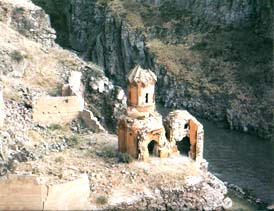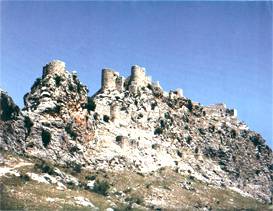
|
|
Tell a friend Bookmark Us Contact Us
Cilician Bride, 13th Century.Source: Miniature from a 13th Century Bible kept in the Library at St. Lazar, Venice.


 |
| Illustration enhanced by A.A.A. Dolls |
Meanwhile, the Armenians who went to Byzantium soon constituted one of the most important and influential ethnic groups in the empire. They became the dominant element in the army. Very large numbers of the generals were Armenians to which Byzantium owed most of its victorious campaigns in the 9th, 10th, and 11th Centuries. Starting with Maurice in the

|
|
of the virgins) in Ani, overlooking the Akhurian River. The name refers to St. Hripsime and her companions. |
Ani was to fall to the Seljuk Turks in the 11th Century. In this period some families migrated north to Georgia and the Caucasus, with others going to Poland. More Armenians went to Byzantium, among them various nobles of Bagratid court. One of these, Ruben, was to establish the Rubenid dynasty in Cilicia.

|
|
Levongla (fortress of Levon), located in Armenian Cilicia. Its date is uncertain, but it may have been built around the 12th century. |